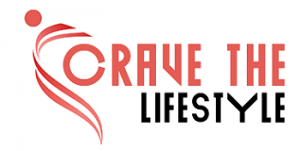Creative professionals constantly seek tools that can streamline their workflow and elevate their designs. With a myriad of options available, choosing the right design software can be daunting. This guide highlights the top design software tools that are essential for any creative professional looking to enhance their productivity and creativity.
Adobe Creative Cloud: The Industry Standard
Adobe Creative Cloud remains the go-to suite for many designers. It encompasses a range of applications, including Photoshop, Illustrator, and InDesign, each tailored to specific design needs.
- Photoshop: Ideal for photo editing and digital painting.
- Illustrator: Perfect for vector graphics and illustration.
- InDesign: Best for layout design and desktop publishing.
The seamless integration between these tools allows for a cohesive workflow, making Adobe Creative Cloud indispensable for professionals.
Sketch: A Vector Design Gem
Sketch is a vector-based design tool primarily used for web, UI, and mobile design. It offers a user-friendly interface and powerful features such as symbols and shared styles, which promote efficiency and consistency in design projects.
- Collaborative Features: Sketch’s cloud collaboration capabilities make it easy for teams to work together in real-time.
- Extensive Plugin Ecosystem: With numerous plugins available, designers can extend Sketch’s functionality to suit their specific needs.
Figma: Revolutionising Collaborative Design
Figma stands out with its emphasis on collaboration and cloud-based functionality. It is particularly popular for UI/UX design, allowing multiple designers to work on the same project simultaneously.
- Real-time Collaboration: Figma’s real-time collaboration feature is a game-changer, enabling teams to design together effortlessly.
- Prototyping and Design Systems: It offers robust prototyping tools and design system management, ensuring consistency across projects.
Affinity Designer: A Cost-effective Alternative
Affinity Designer by Serif is a powerful and affordable alternative to Adobe Illustrator. It is suitable for vector and raster design, offering a comprehensive set of tools for graphic design projects.
- Precision and Performance: Known for its speed and precision, Affinity Designer handles complex documents with ease.
- One-time Purchase: Unlike Adobe’s subscription model, Affinity Designer requires a one-time purchase, making it a cost-effective choice.
CorelDRAW: Versatile and Powerful
CorelDRAW Graphics Suite is another versatile design software that caters to various design needs, from vector illustration to photo editing. It is favoured for its intuitive interface and extensive feature set.
- Customisation and Flexibility: CorelDRAW offers extensive customisation options, allowing designers to tailor the software to their workflow.
- Multi-page View: The multi-page view feature is particularly useful for layout and print design projects.
Procreate: For Digital Painting and Illustration
Procreate is a favourite among digital artists and illustrators, known for its intuitive interface and powerful brush engine. It is exclusive to iPad, making it a portable option for artists on the go.
- Natural Drawing Experience: Procreate’s brush engine mimics the feel of traditional drawing tools, providing a natural drawing experience.
- High-resolution Canvas: It supports high-resolution canvases, making it suitable for detailed artwork.
Conclusion
Selecting the right design software can significantly impact a creative professional’s workflow and output. Each tool mentioned above offers unique features and benefits, catering to various aspects of design work. By integrating these tools into their workflow, designers can enhance their creativity, efficiency, and overall productivity.
Whether it’s the comprehensive suite of Adobe Creative Cloud, the collaborative power of Figma, or the precision of Affinity Designer, there’s a perfect tool for every creative need.


 Using SQL for Bayesian Inference: Building Probabilistic Models with Data
Using SQL for Bayesian Inference: Building Probabilistic Models with Data  Why do people love the surprises in online slot games?
Why do people love the surprises in online slot games?  Can shockwave for ED help men with high cholesterol?
Can shockwave for ED help men with high cholesterol?  Feeding Sheep Through the Seasons: Changing diets for summer and winter
Feeding Sheep Through the Seasons: Changing diets for summer and winter  Role of CBD Vape Pens in Natural Pain Relief?
Role of CBD Vape Pens in Natural Pain Relief?  Simple Steps to Prevent Burnout Before It Takes a Toll
Simple Steps to Prevent Burnout Before It Takes a Toll  Why Low-Acid Organic Coffee is the Perfect Choice for Sensitive Stomachs?
Why Low-Acid Organic Coffee is the Perfect Choice for Sensitive Stomachs?  Which Ayurvedic Medicine is the Best Tablet for Piles?
Which Ayurvedic Medicine is the Best Tablet for Piles?  Discover the Latest Hits on Zee5: Must-Watch Movies and Series
Discover the Latest Hits on Zee5: Must-Watch Movies and Series 